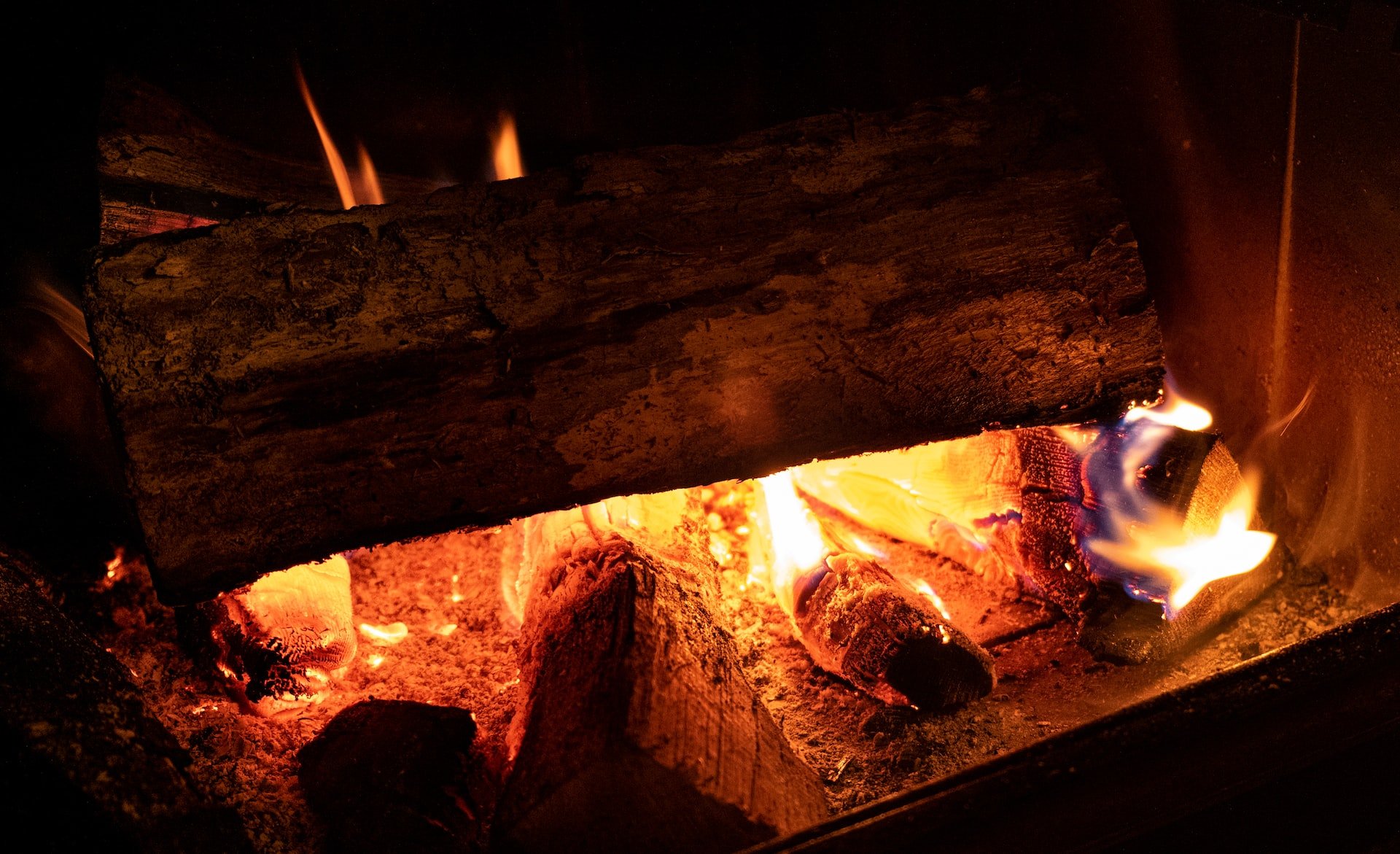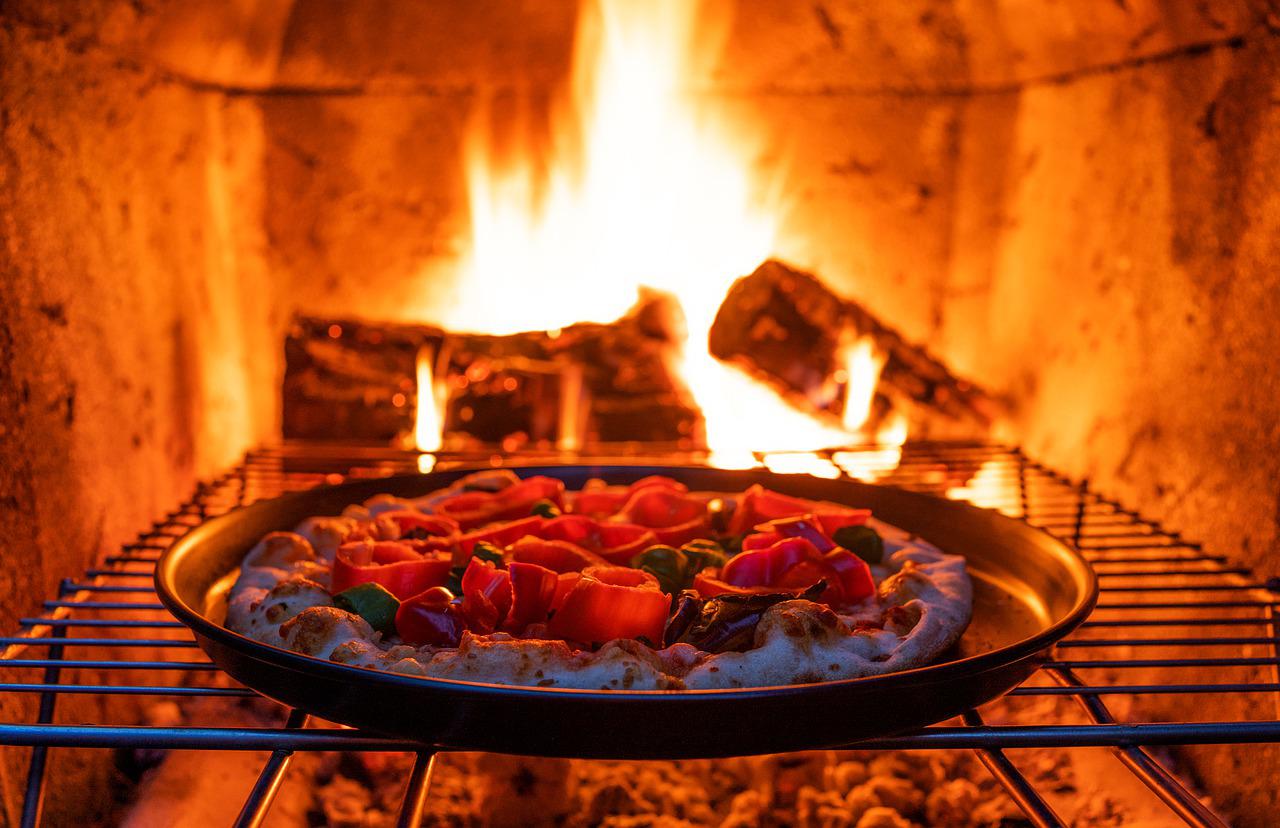The Various Advantages of Using a Wood Burning Stove
Wood-burning stoves are self-contained heating appliances that use wood combustion to generate indoor heat. There are many different sizes and styles, but the fundamental principles remain the same.
The stove's body, which is usually made of steel or cast iron, contains a wood fire. The fire warms the stove's body, which radiates heat into the surrounding area. The smoke from the fire exits the structure via a passageway (called the flue) that leads to a chimney.
While they have taken the backstage due to the different heating technology available, there are various advantages to using a wood-burning stove. In this article, we will run you through the reasons why you should consider a wood stove.
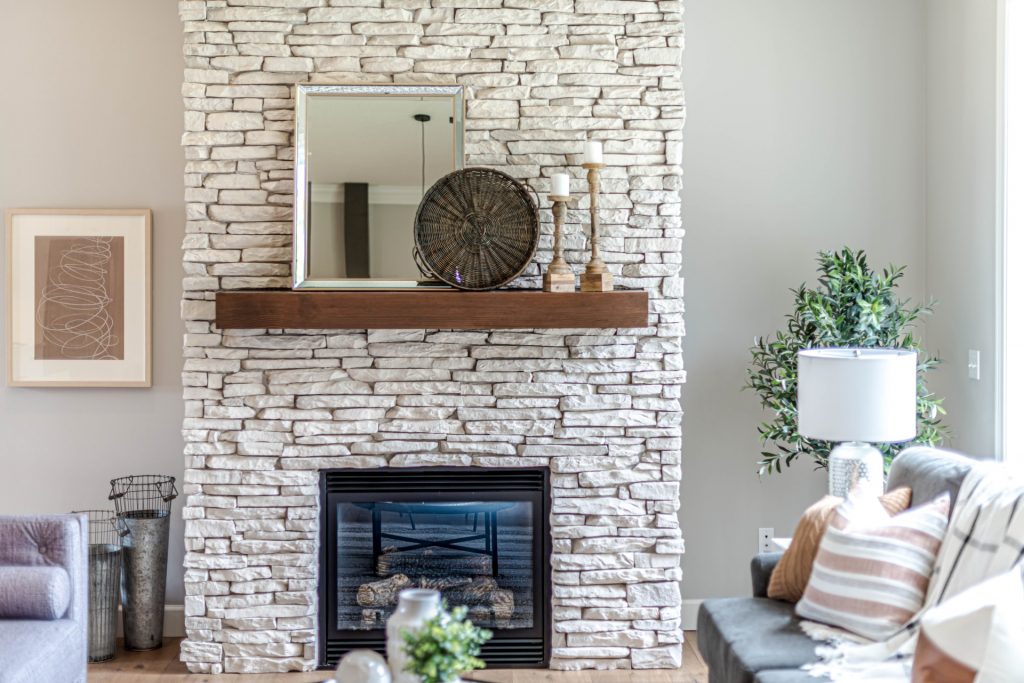
Beyond the Country Chic Aesthetic
Wood-burning stoves today come in a wide range of styles, from traditional pot-bellied country kitchen units to sleek, ultramodern contemporary models. Wood-burning stoves are also available in freestanding, corner, and built-in wall-mounted configurations.
Heating More Space
A wood stove on the main floor will also help heat a second floor because heat rises. Placing the stove in the room where you spend the most time can help you save up to 25% on fuel.
You may find whole-house wood-burning systems that can replace existing gas, oil, or electric heating systems to heat your entire home for less. They're also extremely modern, with features such as automatic wood hopper loading, automatic ignition switches, programmable timer settings, and remote controls.
Efficient Modern Models of Stoves
Earlier models of wood stoves were not known for their efficiency, but stove manufacturers have improved in recent years. When shopping, look for EPA-certified models that emit only two to seven grams of smoke per hour instead of the 15 to 30 grams per hour produced by old, uncertified stoves.
Saving on Energy Usage
Four cubic metres of adequately seasoned hardwood generates heat equivalent to approximately 590 litres of fuel oil. Wood is a renewable resource, and trees grown in your area can help your local economy.
Added Safety Features
Since the 1980s, wood stoves have become safer than ever. This is due not only to the new appliance and part standards but also to training and certification programs for people who sell and install wood stoves. They'll assist you in ensuring that your stove is installed correctly, with a proper hearth underneath to protect your floor.
Reliability
One of the most unpleasant aspects of severe winter weather (aside from having to dig your way out) is the possibility of losing power. That's where a wood stove comes in handy, keeping your home toasty warm and providing a place to cook a meal even when the rest of your appliances are broken.
Airflow Control
If you already have a wood-burning fireplace in your home, you can buy a fireplace insert to convert it from a purely decorative hearth to a functional wood stove. These insert kits close off the fireplace and allow you to control airflow like a wood-burning stove.
Functionality
You can find modern wood stove units that can be connected to water heaters or radiators for even more energy savings. A growing online community of resourceful home hackers can assist you in safely DIYing your solution.
Conclusion
Wood stoves are a great way to heat your home. They are efficient and can save you money on your heating bill. They are also environmentally friendly and can help you reduce your carbon footprint.
Are you looking for a wood stove in Scotland? Stove Scotland has experts with comprehensive knowledge of stoves and fires to ensure you get the perfect wood and multi-fuel burning stoves. Get a free quote today!
How to Ensure That Wood Burning Stoves Are Safe to Use
There's something special and romantic about a wood burning stove that you can't get from central heating. That's why, even though central heating has been around for a long time, stoves are still popular in British homes.
Aside from that, using wood as a heat source is a sustainable way to reduce your carbon footprint.
While wood burning stoves are often seen as a more environmentally friendly option, they are actually responsible for 38% of the UK's primary emissions of harmful particulate matter (PM) and sulphur dioxide.
The government's goal is to ensure that only the cleanest stoves are available for homeowners to buy by 2022. In January 2019, the government introduced legislation to encourage the sale of safer wood burning stoves.
But how do you ensure that your wood burning stove is safe for your home and the environment? Here are some things you should consider.
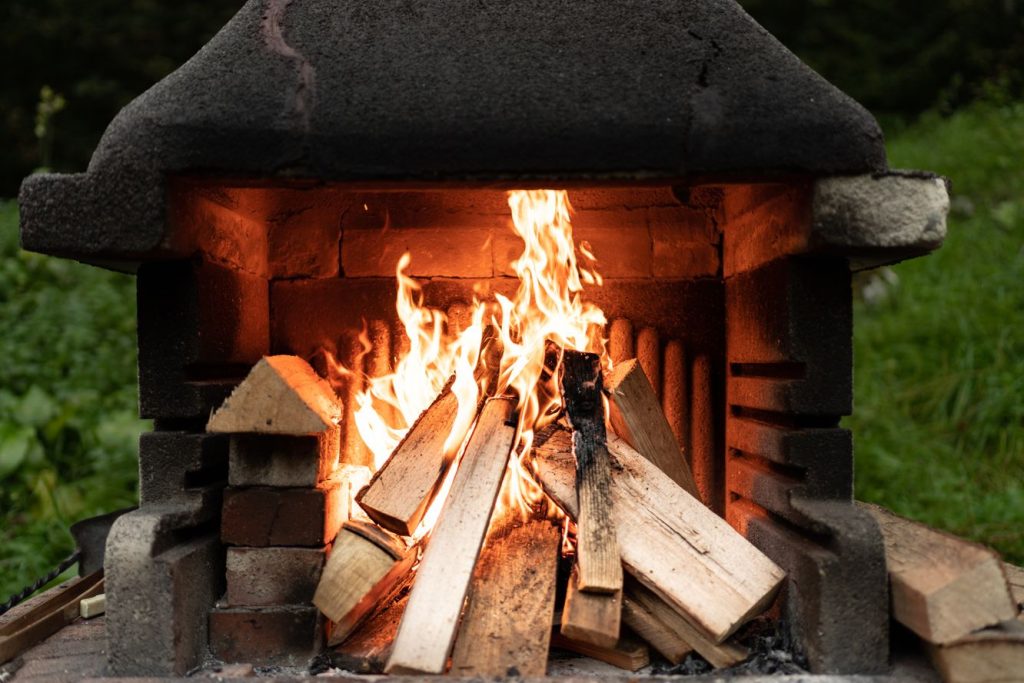
Using Ecodesign Ready Appliance
Ecodesign ready stoves are the newest generation of ecofriendly stoves. Advanced flue systems allow these stoves to channel airflow into creating more thorough and fasterburning combustion. This results in less pollution and a cleaner burning process overall. Not only does this make for a healthier home environment, but it also helps save on fuel costs in the long run.
The Clean Air Strategy is a set of guidelines introduced by the UK government in 2018 to reduce the number of harmful particulates released into the atmosphere. As part of the strategy, the government has placed stricter regulations on manufacturing and selling wood burning stoves. These changes have resulted in a shakeup of the wood burning stove industry, with many manufacturers adapting their products to meet the new standards.
The goal of SIA, together with DEFRA, is that by 2022, the only wood burners available to purchase in the UK will be those that meet the Ecodesign Ready standards. These standards are designed to ensure that wood burners are as efficient and clean burning as possible to help reduce emissions and improve air quality.
Burning the Right Fuel
The type of fuel you burn in your stove makes a big difference in the safety and emissions of your stove. The best type of wood to burn is dry, well-seasoned hardwood.
Hardwoods, such as oak and ash, have a lower moisture content and produce less smoke than softwoods. They also produce more heat and last longer when burning.
If you must burn softwood, make sure it's been adequately seasoned so it doesn't produce too much smoke. You can tell if the wood is properly seasoned if it's:
- Light in weight
- Has cracks on the ends or sides (called "checking")
- Splits easily when bent
- With less than 20% moisture content
The moisture content of logs is vital because waterlogged wood releases significantly more smoke and harmful gases into the air than dry wood. This can cause serious health problems for you and your family and damage your home.
The UK's Department for Environment, Food & Rural Affairs (DEFRA) recommends using fuel certified by Woodsure as "Ready to Burn." This certification means the timber bag has less than 20% water content. Alternatively, you can check the moisture content of your firewood with a moisture meter before burning it.
Conclusion
Wood burning stoves are a popular and environmentally friendly heating option, but they can pose a risk if not used properly. Ensuring that your wood burning stove is safe is important for your home and the environment. By following these guidelines, you can be sure that your wood burning stove is safe for your home and the environment.
If you're looking for an environmentally friendly and comfortable way to heat your home, a wood burning stove is a great option. At Stove Scotland, we supply, install and maintain wood burning stoves that are designed with safety in mind. We also offer installation packages to make it easy for you to get your new stove set up in no time. Let us help you choose the perfect stove for your home! Contact us today to get started!
5 Uncommon Yet Fascinating Uses for Wood Ash You Must Know
Wood ash is the remaining powdery substance left behind after the combustion of wood. It is generally composed of calcium oxide and other minerals that are extracted from the wood during the burning process. While most people would think to simply throw wood ash away, it's not actually completely useless. On the contrary, wood ash can have some fascinating uses that you may be interested in trying.
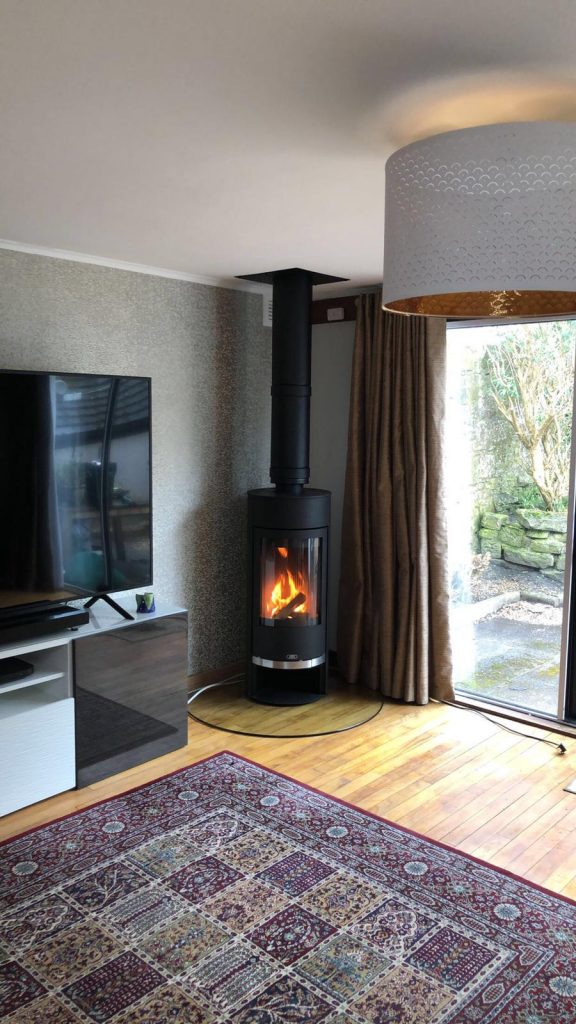
1. Teeth Whitening
Wood ash is often used as a natural teeth whitening agent. The high concentration of calcium in wood ash helps to remove any unwanted stains on your teeth while also providing a gentle abrasive action that can help to scrub away any plaque or tartar buildup. To use wood ash as a teeth whitener, simply wet your toothbrush and dip it into the wood ash. Gently brush your teeth as you would normally, and then rinse your mouth thoroughly with water.
2. Soil Amendment
Wood ash can also be used as a soil amendment to improve the overall quality of your garden soil. The calcium in wood ash helps to improve drainage and aeration while also providing essential nutrients that can help plants to grow more vigorously. Wood ash can also help to neutralize the soil pH, making it more hospitable for plants that prefer a neutral or slightly alkaline environment. To use wood ash as a soil amendment, simply spread it evenly over the surface of your garden soil and then work it in with a garden tiller or spade.
3. Pest Repellent
Wood ash can also be used as a natural pest repellent. The high concentration of calcium in wood ash helps to deter many common household pests such as ants, cockroaches, and silverfish. To use wood ash as a pest repellent, simply sprinkle it around the perimeter of your home or garden. You can also sprinkle wood ash around the base of trees and shrubs to help deter rabbits and other small mammals from eating the plants.
4. Ice Melt
When the winter weather hits, wood ash can be used in place of salt or other ice melt products. Wood ash works by lowering the freezing point of water, which helps to prevent ice and snow from forming. To use wood ash as an ice melt, simply sprinkle it over icy areas. You can also mix wood ash with salt to create a more effective ice melt.
5. Pottery
Pottery is another great use for wood ash. When mixed with water, wood ash can be used to create a glaze for pottery. This glaze can give pottery a unique, rustic look. To use wood ash to glaze pottery, simply mix it with water to form a paste. Then, apply the paste to the pottery and bake it in the oven.
Final Thoughts
As you can see, there are many different ways to use wood ash. Whether you’re looking for a natural way to fertilize your plants or you’re trying to create a unique glaze for your pottery, wood ash can be a great option. So, the next time you have some wood ash on hand, don’t throw it away. Instead, put it to good use.
Get a quality wood stove in Scotland from Stove Scotland. Our priority is to provide you with a professional, honest and reliable service at an affordable price. As market experts with a comprehensive knowledge of stoves and fires, we will work with you to ensure that your stove will perfectly fit the style and dimensions of your room. Get a free quote now!
Are Wood Burning Stoves Better for the Environment?
Considering the current state of our world, it would be wise to look for more environmentally friendly ways to live our lives. And while there are a slew of different ways to do this, one thing you may want to consider is making the switch to wood-burning stoves. Wood-burning stoves are a low-carbon alternative to heating your home using fossil fuels. Trees absorb carbon dioxide as they grow; when their wood is burned, they release the carbon back into the atmosphere. Locally sourced logs or wood pellets can make your stove carbon neutral. Now, we understand if you need more information on this subject. This is why we thought it would be useful to put together a brief discussion on wood-burning stoves and their ability to reduce your impact on this environment. If this is something that you’re interested in learning more about, read on as we discuss whether or not wood-burning stoves are better for the environment.
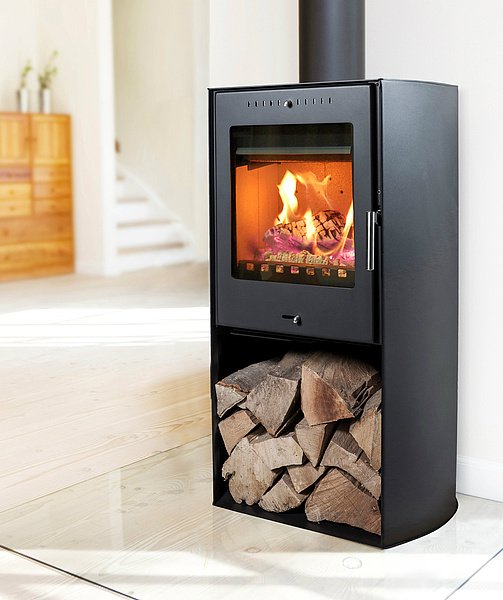
Are Logs Better than Fossil Fuels?
The key advantage of log-burning stoves over electric or gas heaters is the fuel they burn. Logs are carbon neutral, meaning that when they burn, they increase the carbon dioxide in the atmosphere by the same amount that forests absorb every year. Fossil fuels are not carbon neutral and add to the amount of carbon already present in the cycle. They need to be imported, so their carbon footprint is even greater.
Aside from being carbon neutral, the kinds of emissions given off by burning wood are far less harmful than those given off by fossil fuels. The most dangerous gasses released into the air are carbon dioxide, nitrous oxides, and particulate matter that is less than 2.5 microns in diameter, also called PM2.5, which is best combated by reducing the burning of fossil fuels.
What Type of Wood Should You Use?
Burning any old wood in your wood-burning stove is not necessarily the most environmentally-friendly approach. To burn wood in a wood-burning stove as efficiently as possible and cause as little of an impact on the environment as possible, you should use dry, seasoned wood. This fuel is easier for your stove to burn, which means that it heats up more quickly and produces more heat than damp or unseasoned wood.
The most energy-efficient humidity for logs is under 20%, while new logs may be as high as 60%. To bring the log moisture content down to the most energy-efficient level, place the logs in a dry location with plenty of air circulation for at least a year. You can also purchase kiln-dried logs, which have a moisture content of around 18% and will thus dry out faster.
Conclusion
We hope this article proves to be useful when it comes to helping you gain a better understanding of how using wood-burning stoves can help reduce your impact on the environment. As you can see, wood-burning stoves are a far more sustainable option than other stoves. If you’re looking to do your part in improving the state of the environment, wood-burning stoves are something that you need to seriously consider.
Are you looking to buy the best log-burning stoves in Scotland? Stove Scotland has got what you need! We will work with you to ensure that your stove will perfectly fit the style and dimensions of your room. Contact us today to learn more
5 Wellbeing Benefits of Having a Wood Burner at Home
Don't you love it when you go home from a busy day at work and just snuggle up in front of a fireplace and just relax on your sofa? That's exactly the kind of feeling wood-burning stoves bring to people. If you want to experience the same thing, then investing in a wood-burning stove is the way to go. Here are some of the well-being benefits you can get from investing in your own wood burner.

1. Creating a Cosy Home
Even if your home is not big, you can still make it feel like a cosy place to be in. If you want to achieve this, you should invest in a wood-burning stove. These stoves make your home feel warm and inviting. They also give you the feeling that you are in a cabin in the middle of nowhere. If you have a fireplace in your home, then you are already halfway there because you already have the makings for a cosy home. Now all you need is a warm stove, and you can have the best time of your life.
2. Keeps You Warm
You may think that a wood-burning stove is not necessary when you have central heat. But you will surely love the extra warmth a wood-burning stove provides. You can use it as a wonderful source of heat in the colder months of the year. If you have the money to spare, you can purchase a stove that uses wood pellets. Wood pellets have a better heat output than wood. They also have a better lifespan.
3. Relaxation
One of the best things about wood-burning stoves is that they create the perfect mood for relaxation and comfort. You can't relax when the weather is cold and gloomy outside. But once you have a wood-burning stove in your home, you can forget about any other worries. You can just relax in front of the fire with your favourite cushion and a book. These stoves burn wood, which produces a beautiful aroma. And that's not all. You can also roast marshmallows and make s'mores, and that's one of the best ways to relax in the winter.
4. Perfect for Family Time
Who doesn't love the scent of firewood? Wood-burning stoves can make you feel like you are in a cabin in the woods, and what's better than spending quality time with your family? With a wood-burning stove, you can just sit around and chat with one another on a cold day. You can ask your children about how their day was at school and what they did. It's a great way to get inside the head of your kids and learn what they really think and see.
5. Wood is a Renewable Resource
A lot of people are now starting to put the preservation of the environment as a top priority. Buying a wood-burning stove for your home is the best way to ensure that you are not only satisfying your need for warmth but are also doing your part to help in preserving the environment at the same time.
Conclusion
There are a lot of people out there who are sceptical about the benefits of wood-burning stoves because they think it's too old-fashioned. But there is no need to worry if you are thinking of switching to a wood-burning stove. You can still enjoy all the benefits of modern technology while also enjoying the benefits a wood-burning stove has to offer.
If you think a wood-burning stove is a perfect addition to your home, then you should start shopping around for the best burners on the market. What better place to start looking than Stove Scotland. We are the go-to supplier and installer of multi-fuel and wood-burning stoves in the UK. Once you've found a burner you fancy, we can help with fireplace installation in Scotland and surrounding areas. Get in touch with us today!
Important Questions to Answer When Considering a Wood Stove
Multifuel and wood stoves come in various shapes, sizes and styles. With so many options available, knowing where to start is challenging when you're ready to purchase one. So here are important questions to answer before buying one.

Question 1: What Stove Style Do You Want to Buy?
One of the most crucial decisions involving your stove is its design. This is the part you must look at every time you use it. So while it might seem like the easiest decision to make, the range of styles and materials available makes this choice much harder than you may think!
Traditional stoves are popular in many country homes and period properties and often add the finishing touch to a cosy living room setting. However, if you plan to place a stove in an open-plan or a modern living room area, you may want to buy a more contemporary stove style. Often, modern wood stoves are designed with more of a streamlined shape containing large viewing windows for guests to enjoy the roaring fire burning inside.
Question 2: Is Your Area Smoke-Controlled?
The following substantial question to ask when buying a multi-fuel or wood stove is whether you live in a smoke-controlled zone in the UK. If you don’t live in a smoke-controlled zone, you don’t have to worry about this concern as much. But if you do live in a smoke-controlled area of the UK, it is crucial that you only purchase a DEFRA-approved stove. Stoves that DEFRA has approved are cleared to burn authorised fuels in smoke-controlled areas in the UK.
UK smoke-controlled zones are usually limited to urban, town and city areas, but it is always essential to ensure your area is not included. You can contact your council directly to inquire about this or enter your postcode here to find out.
Question 3: What’s the Fuel You Use?
The stove you select is primarily influenced by the type of fuel you want to burn. Not all stoves can burn solid fuels, and some may only be able to burn correctly seasoned wood. It is essential to understand that wood stoves will only burn wood, so using any other fuel source will not work. On the other hand, multi-fuel stoves provide more flexibility for the user.
Multi-fuel stoves can burn wood and solid and smokeless fuels like coal, peat and anthracite. These make them perfect for homes located in smoke-controlled zones.
Question 4: What Are the Areas You Want to Heat?
You need a stove with the correct heat output, or ‘Kw’, for the room you want to put it in. Take note of the following pointers according to your home’s size:
- Smaller living spaces should have a heat output of no more than 5Kw.
- Medium to large rooms will need a stove with an output of 5Kw to 8Kw, depending on the size of the room.
- To heat your entire home or contribute to your boiler or central heating, you should buy a stove that is 8Kw or more.
Conclusion
Get a branded wood stove in Scotland from Stove Scotland today! We carry top brands like Merlin, Aduro, Pod, and more to ensure your new stove fits perfectly in your home. Visit our website and check out our collection!
What Should You Get: Wood Fireplaces or Wood Stoves?
The fireplace is usually the centrepiece of a home, and it's the place where everybody gathers around to warm up. Besides that, the fireplace also gives the home an exquisite look, helping promote a sense of elegance and comfort at home.
Every home needs a fireplace because it helps to add value to the house, and it's required for survival in cold weather. Now the question is, what kind should one have? Should you invest in a wood fireplace or a wood stove?
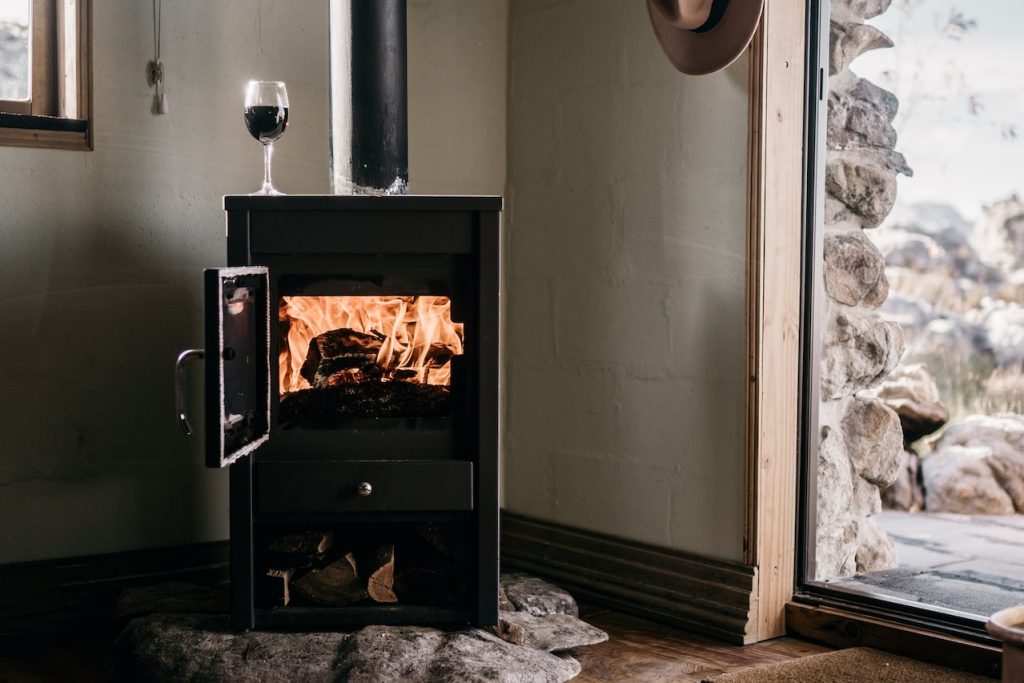
Wood Fireplaces
Most households have wood fireplaces because it's the primary source of heat for homes. In the past, you could even find many homes having wood fireplaces in their kitchens. The reason wood fireplaces are still popular nowadays is that they have a natural look.
Wood fireplaces are charming because they give the whole home a warm atmosphere, making it more enjoyable. It also often complements the décor of the house. Still, wood fireplaces need a lot of effort to maintain and must be handled carefully.
Wood Stoves
Wood stoves do not have the same appearance as wood fireplaces but also have a natural look. Nonetheless, wood stoves are more convenient because they’re self-heating. Wood stoves only require wood logs to work, which are easier to find nowadays since most stores sell them.
Wood stoves can burn on their own because it's well insulated. That is unlike wood fireplaces that sometimes need someone to help them get started.
The only challenge with wood stoves is their large size. It's sometimes hard to find a place for a wood stove in your home. Wood stoves are also huge, making it challenging to move around.
The wood stove vs wood fireplace debate is still going on today. Today, wood stoves are homes' primary heat source because they provide better heat than wood fireplaces. Wood stoves are easy to maintain because they are self-heating, making them more convenient.
Both wood stoves and wood fireplaces can be used as an alternative home heating system since they are a lot cheaper compared to other heating systems.
Differences in Efficiency
Wood stoves and wood fireplaces provide heat twice as effective when it comes to heating a home. Although they do not use electricity, they do produce carbon monoxide. That is why it's essential to have a source of fresh air near the fireplace.
While wood fireplaces are deemed the most popular heating system, wood stoves are still being used by many households across the country. This is because they’re more efficient when it comes to heat output.
Differences in Energy Consumption
Wood fireplaces and wood stoves consume more energy than other heating systems. They consume more energy because they both have to keep the fire inside the fireplace burning. The fire needs to be put out after each time it's used. However, because wood stoves are more efficient, they require less fuel to adequately heat your home.
Conclusion
Whether you invest in a wood fireplace or wood stove depends on your preference. They are both efficient and helpful in heating a home. It all boils down to choosing what you think is better for your home. You should also consider the fuel materials you have available. Another important factor is your budget. If you are on a tight budget, you could choose to purchase a wood stove.
If you decide to purchase a wood stove in Scotland, check out our products. Stove Scotland aims to provide our clients with professional, honest, and reliable service at affordable prices. We supply, install, and maintain wood-burning stoves. Please contact us for a free no-obligation quote.
What to Consider When You’re Buying a Wood-Burning Stove
Finding the right wood-burning stove for your home can be a hard task. If you are planning on getting a wood-burning stove, keep reading below for things that you should consider.

1. Wood Burning or Multi-Fuel
The first thing you need to decide is what type of stove you want. Do you want a wood-burning or a multi-fuel one?
A multi-fuel stove is a stove that you can burn either peat, coal or wood. They are more expensive than a wood-burning stove and can cause an increase in your carbon footprint.
They are also harder to maintain compared to a wood-burning one, and they can cause you to feel overwhelmed when it comes to operating them.
A wood-burning stove is exactly how it sounds. They are stoves that you can only burn wood in. If you are planning on getting one, and you want it for emergency situations, you should go for a wood-burning one.
2. Steel or Cast Iron Body
The body of the stove is the part of it that takes a beating. So you want to make sure that it is of a decent quality.
For a steel one, you will need to deal with rust and corrosion. A cast iron is naturally rust-proof so you will not have to worry about this.
3. Size and Heat
Is your house big or small? How many people do you live with? The size of the stove will determine how much heat it generates and how much it will cost you to operate.
If you have a large house and you live alone, then you will need a large stove. If you live in a smaller house with more people, then a smaller stove will be enough.
4. Ease of Use
This is a tricky one. Some stoves are hard to operate, and others are easy. If you get a hard one, it will be difficult to heat your house in an emergency, and you will end up giving up on it.
If you get an easy one, then the operation will not be a problem, and you will be able to maximise its use.
5. Cost
This is a huge deciding factor. The price of a stove will affect how much heat you can get out of it.
If you get a quality one, then it will be more expensive. If you get a cheap one, it will cost less, but it will not be of great quality.
6. Efficiency
The stove will have an efficiency rating. This is the amount of fuel each cubic meter of the stove will burn.
The higher this rating is, the more efficient the stove is. Usually, stoves that are used solely for heating will have a higher efficiency rating than ones used as a primary or secondary heat source.
7. Safety
If you are buying a wood-burning stove, then you will want to make sure that it is safe to operate. If it is unsafe, then it might not be worth it.
Make sure that you have it thoroughly checked out to ensure that it is safe and that it will not cause any health problems or injuries to you or your family.
Conclusion
Choosing the right wood-burning stove will not only be practical, but it will also be a worthwhile investment. You will not only be able to heat your house, but you will be able to do so cheaply and efficiently. The factors listed in this article will help you decide on the right one for you. Make sure you follow them, and you will end up with not only a stove with the best functionality, but also a well-built and safe stove.
If you want to buy a wood stove in Scotland and the UK, you can get one from us at Stove Scotland in West Lothian. Not only do we supply wood-burning stoves, but we will also ensure that the dimensions fit anywhere in your home. Contact us to learn more about our offerings.
Wood Stove Installation Guide for Homeowners
Having your own wood-burning stove at your house can be a real benefit financially, convenience, and above all, from an enjoyment point of view. It's possible to heat your entire home with a stove, and when you burn for heat rather than for cooking, then the wood fuel can be bought in a more economical way and will make a lot more sense financially. However, before you can enjoy all that, there's the matter of installing the stove itself. Here are some of the things you need to consider before installing a wood stove in your home.
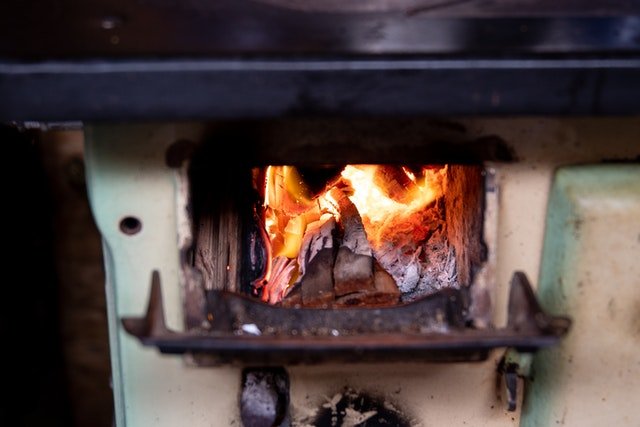
Choosing the Right Location
The location is an extremely important factor in installing a wood-burning stove. You need to analyse how you will use it and how long you will be using it for. The location of your stove needs to be safe and the only place you can install it. If the spot you are placing the stove is too close to the wall, then the heat may damage the wallpaper.
Placing the stove away from a wall will be better, but also consider the heat output. A lot of heat is released from the back of the stove, and if you're placing it close to the wall, then you will be heating the wall rather than the room.
The location has to be right to make sure that the stove will work as it's meant to, and the area surrounding it needs to be taken into account. It may be better to place it higher up due to the fact that heat rises, and it will rise away from the floor rather than hovering over it. You can place it under the stairs or in a cupboard, and the warmth will rise from there. You can even convert a room that is not being used as a bedroom into a box room with a wood stove in it.
Plan for Firewood
If you do not live in a town that sells firewood, then you will need to plan for the kind of fuel you will use. What is available in your area will dictate the kind of stove you install. A good idea is to figure out how much firewood you will need for the winter and buy it in advance. This way, you will know that you have the required amount of firewood for the winter and will be able to get a bargain on it.
If you buy it in small amounts when you need it the most, then you will end up paying more for it, and the price may even go up during winter.
Insulation
The choice of materials and type of construction used to build your house will be a crucial factor in determining whether you can use a wood-burning stove or not. You will need to insulate your home, and if you're using a wood fire, then you will need a lot of insulation to protect it from the heat.
The kind of insulation you will use will depend on the type of house you have, but most homes that are insulated enough to withstand the heat from a wood stove should be okay. However, if you're buying a house and you intend to use a wood stove, then it may be worth checking the insulation first to make sure.
Can You Do the Installation Yourself?
It's perfectly possible to install a wood stove on your own, but it can be quite challenging. There are a lot of parts and pieces that go into the installation of a stove, and unless you know what you're doing, you will make a terrible mess of it. So yes, you can do it yourself, but it won't save you money, and you can also be wasting your time.
Conclusion
The advantages of having your own wood-burning stove are numerous, and they can be of real benefit to you. The only drawback is the installation of the stove, and as you can see, it requires a lot of planning to make sure that you have the right materials and are installing the stove in the right way. It's best to call in a professional to do the installation for you instead of going through all the hassle of trying to do it yourself.
Stove Scotland is a family run business focusing on wood-burning stove installations. We make it our priority to provide honest and reliable services every time you come to us. Trust us to supply and install the perfect wood stove for your home. When looking for stove fitters in Scotland, feel free to reach out to us.
Know the Signs That You Need a New Wood-Burning Stove
Your wood-burning stove can last for many years as long as it is well-maintained. However, like other appliances, there will eventually come a time when you will need to replace them for your and your family's safety. There are multiple signs you can look for to tell if it is time to purchase a new wood-burning stove. Keep reading below.
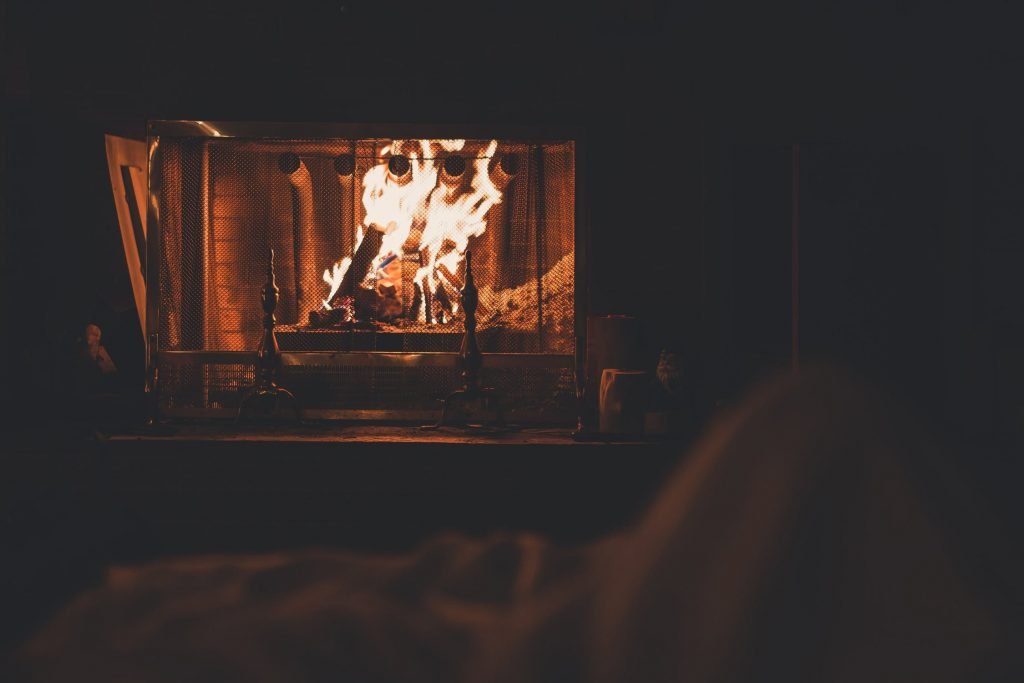
It Is Becoming Difficult to Light
If you can't easily light your wood-burning stove, it may be time to replace it. If you use the same kind of wood each time, you should be able to predict when your stove will burn properly. However, if it has become difficult to light and takes a while to heat up, you should replace your stove.
You Smell Smoke in Your House
One of the most common signs that your wood-burning stove is in bad condition is when you smell smoke. Your wood-burning stove should not emit smoke.
The burning smell could be a sign of a blocked chimney that needs to be cleaned or a problem with the heat exchanger. If you continue to use the stove, it could potentially get worse and lead to a fire. Of course, there can be a number of reasons for the smoke, so make sure you get the help and assistance of a professional if you're uncertain about the reason behind this smell.
Your Wood-Burning Stove Is Making a Lot of Noise
Your wood-burning stove should be almost silent. Therefore, if your wood-burning stove is making loud noises, it is probably damaged. If the noises are the result of a cracked glass door or a bad seal, you will want to replace it. On the other hand, if the noise is coming from the blower, this likely needs to be replaced. A humming noise means that the blower is struggling to push the fresh air into the stove.
You Have Frequent Refires
If you refire your wood-burning stove multiple times a day, it is time to purchase a new one. There are many reasons why a stove needs to be refired, such as when the wood is not burning well, the fire is putting off too much smoke, the stove is not getting hot enough, or when the burn pot is not hot enough to be efficient.
You Have Trouble Using Your Stove Well
If you are experiencing multiple problems operating your stove, you will want to replace it as soon as possible. The issues may include your firebox being too small or the stove taking too long to heat up or not operating at all. If your wood-burning stove has broken parts, it should obviously be replaced.
Conclusion
If any of the above signs apply to you, it is time to replace your stove. Additionally, if you have the money, you may want to consider hiring a professional to check the stove to make sure it is safe and has no alarming issues. Otherwise, purchasing a new wood-burning stove is always the best course of action to address the warning sign. Doing so is vital to preventing accidents and unnecessary expenses inside your property.
Are you looking for a wood stove in Scotland? Check out Stove Scotland. We supply top brands such as Merlin, Aduro, Pod, Askgard, TermaTech, and Burley and are confident that we can find the perfect match for you. Get a free quote now!


